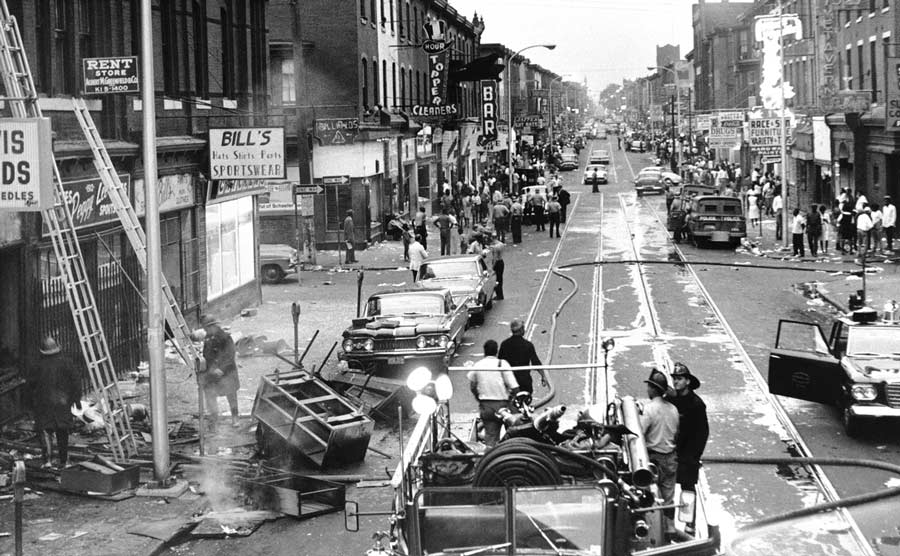The views expressed in our content reflect individual perspectives and do not represent the authoritative views of the Baha'i Faith.
Let me tell you the story of how an Iranian immigrant wound up in all-black Harlem.
The streets of Harlem were a long way away from the dirt lanes of my small hometown in southern Iran and yet, Harlem was where I found myself in the late 1960s working as an administrator at the innovative Harlem Prep School.
Harlem Prep was a fruit of the times, which demanded social justice—but it also became the fruit of a powerful collaborative effort between Christians, Baha’is, the African-American community and the Urban League to draw alienated dropouts back to school and prepare them for college. Harlem Prep proved, as the Baha’i teachings say, that “every member of the human race is capable of education:”
All the marvelous developments and miracles of what we call civilization would have remained hidden, unknown and, so to speak, nonexistent, if man had remained in his natural condition, deprived of the bounties, blessings and benefits of education and mental culture. The intrinsic difference between the ignorant man and the astute philosopher is that the former has not been lifted out of his natural condition, while the latter has undergone systematic training and education in schools and colleges until his mind has awakened and unfolded to higher realms of thought and perception… – Abdu’l-Baha, The Promulgation of Universal Peace, pp. 309-310.
America’s post-World War II prosperity, the Kennedy administration, and a powerful civil rights movement provided the momentum for addressing long-standing social, economic and educational woes. President Johnson proposed the creation of a Great Society through the active involvement of the Federal government. One of the largest legislative efforts in American history, the Great Society aimed to alleviate poverty and advance civil rights. The Federal Government, for the first time, directly involved itself in civil rights, poverty, education, health, housing, voting rights, pollution, the arts, urban development, occupational safety, consumer protection, and mass transit.
Johnson’s ‘War on Poverty’ created programs such as the Job Corps and Head Start, which intended to lift people out of poverty through work, training, and education. Community Action Agencies made efforts to engage people at the grass roots. The public mood, buoyed by prosperity, was willing to support these efforts—but the programs did not always change the structural problems of the economy or of the society, and some tended to be hastily implemented.

Harlem Riots 1964
Many War on Poverty programs targeted disadvantaged urban neighborhoods like Harlem, places of deep discontent with a wide spectrum of problems. In the summer of 1964, the worst riots since 1942 erupted after the killing of a young black man by a white police officer. Harlem had a young population and high population density. Half of Harlem’s population lived in expensive sub-standard housing, and most had low-paying jobs, or no job at all. White employers in those days saved their low wage jobs for black Americans, and unemployment varied from 7% among adults all the way up to 30% for teenagers.
Economic problems fed social problems. By the late 1950s drug use was ten times higher in Harlem than in the rest of the city, and it continued to increase throughout the 1960s. Harlem’s homicide rate was at least six times the city average. Even diseases such as tuberculosis, rare in other parts of the city, infected Harlem. Like the housing, the schools in Harlem were substandard, with deteriorating buildings and decreasing student achievement. Of the freshman class of 1959, 50% would eventually drop out.
Children in low-income districts, most of whom were black and Puerto Rican, were not being adequately educated. Different schemes for integration, decentralization of the Board of Education, and community control of individual schools were in play as possible solutions.
In an attempt to address the broad range of challenges afflicting Harlem, the Harlem Youth Opportunities Unlimited (HARYOU) organization launched a major effort, funded by federal Great Society money. For two years, plans were developed to empower the young people of Harlem and to give them the tools they needed to improve their lives.
The Reverend Eugene Callender, of the venerable and powerful Church of the Master in Morningside Heights, served as chairman of the Board of HARYOU. He opened street academies, informal storefront schools to help at-risk youth re-enter the educational system. But one of the glaring needs in central Harlem was for a college preparatory high school for at-risk youth. To remedy this, Rev. Callender partnered with Manhattanville College, a school run by the Order of the Sacred Heart, a collaboration that followed in the Urban League’s tradition of inter-racial and interreligious fellowship.
Manhattanville already had a tradition of student volunteerism reflecting its Christian mission, which included breaking down racial barriers. For decades, its students had served in neighborhoods in need like Harlem. Sister McCormack, the president of the college, knew the prominent leaders in Harlem and decided to work with Rev. Callender on developing a college preparatory school in Central Harlem for at-risk youth. She put the implementation of the project in the capable hands of Sister Ruth Dowd, who was excited though nervous about her new responsibility.
In June of 1967, Rev. Callender and Sister McCormack signed a memorandum of understanding:
To establish, conduct, operate and maintain a non-sectarian, private college preparatory school for boys and girls between the ages of 15 and 21 who have dropped out of school and who, in the opinion of the administration of the school can be motivated to complete a secondary education, to provide such education for such boys and girls and to develop liaison with a number of colleges eager and willing to accept such graduates.
So began our pioneering alternative to the troubled public education system, the Harlem Prep school.
Next: The Treasures that Education can Reveal

















Comments
Sign in or create an account
Continue with Facebookor